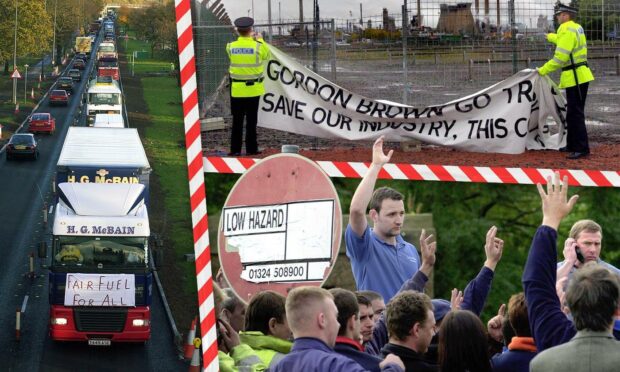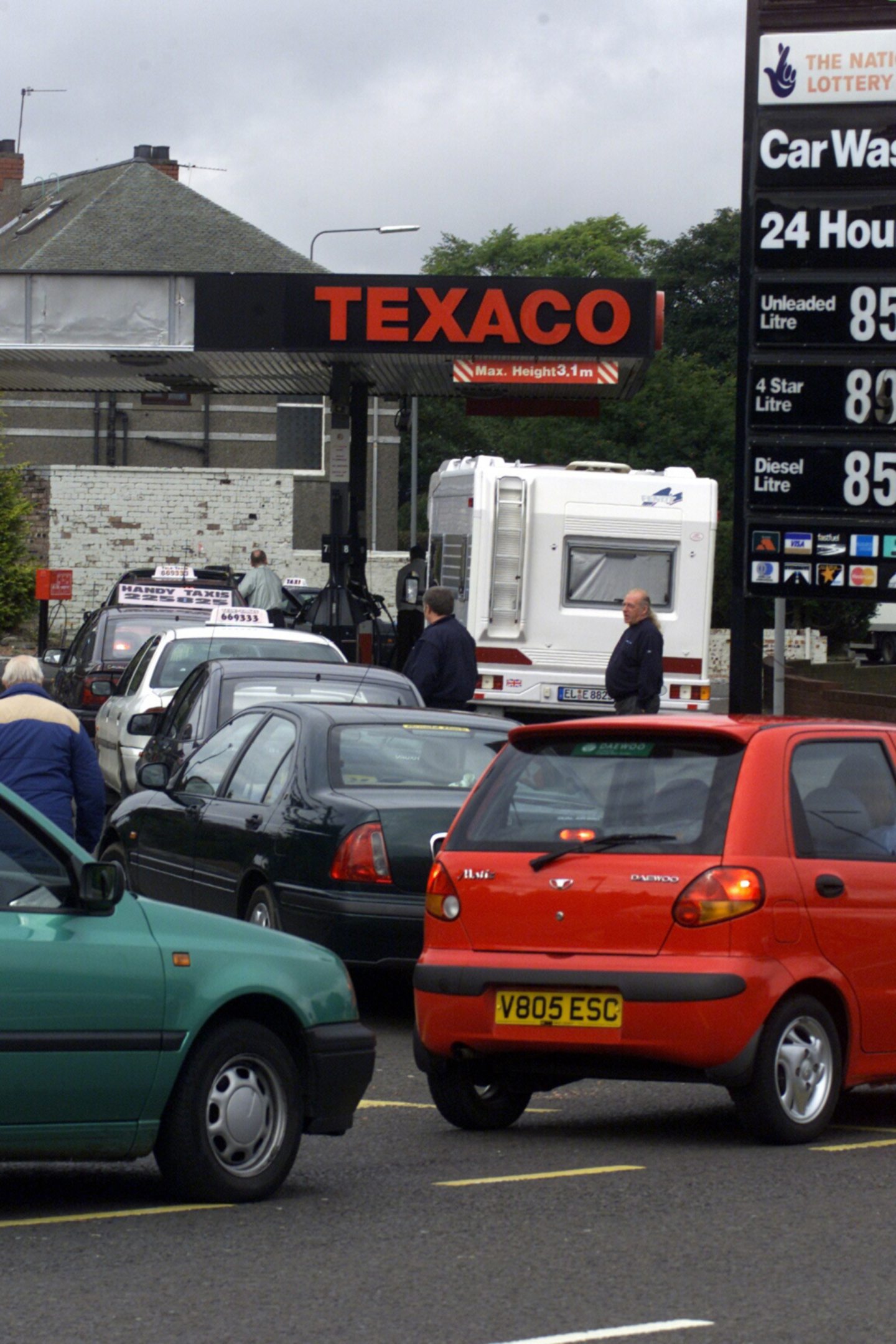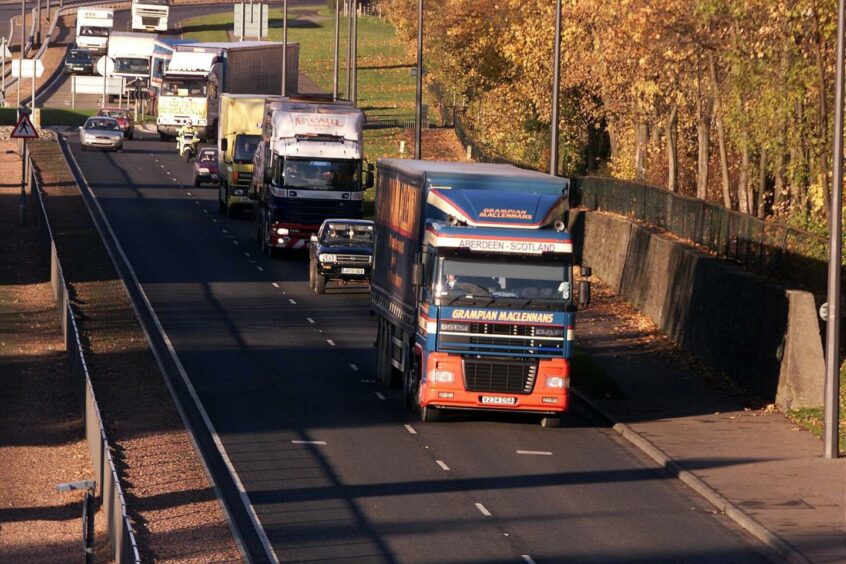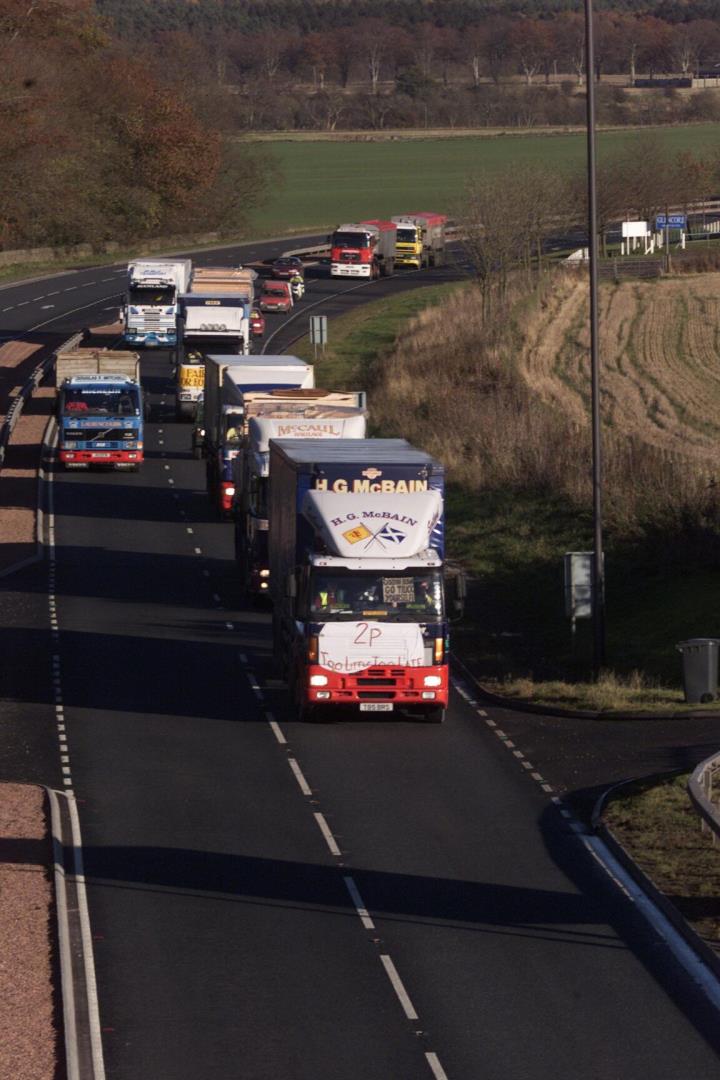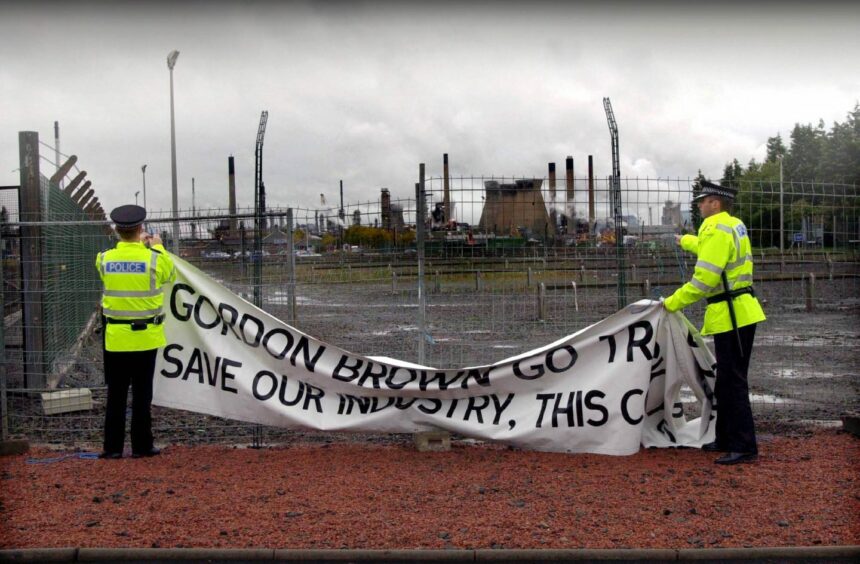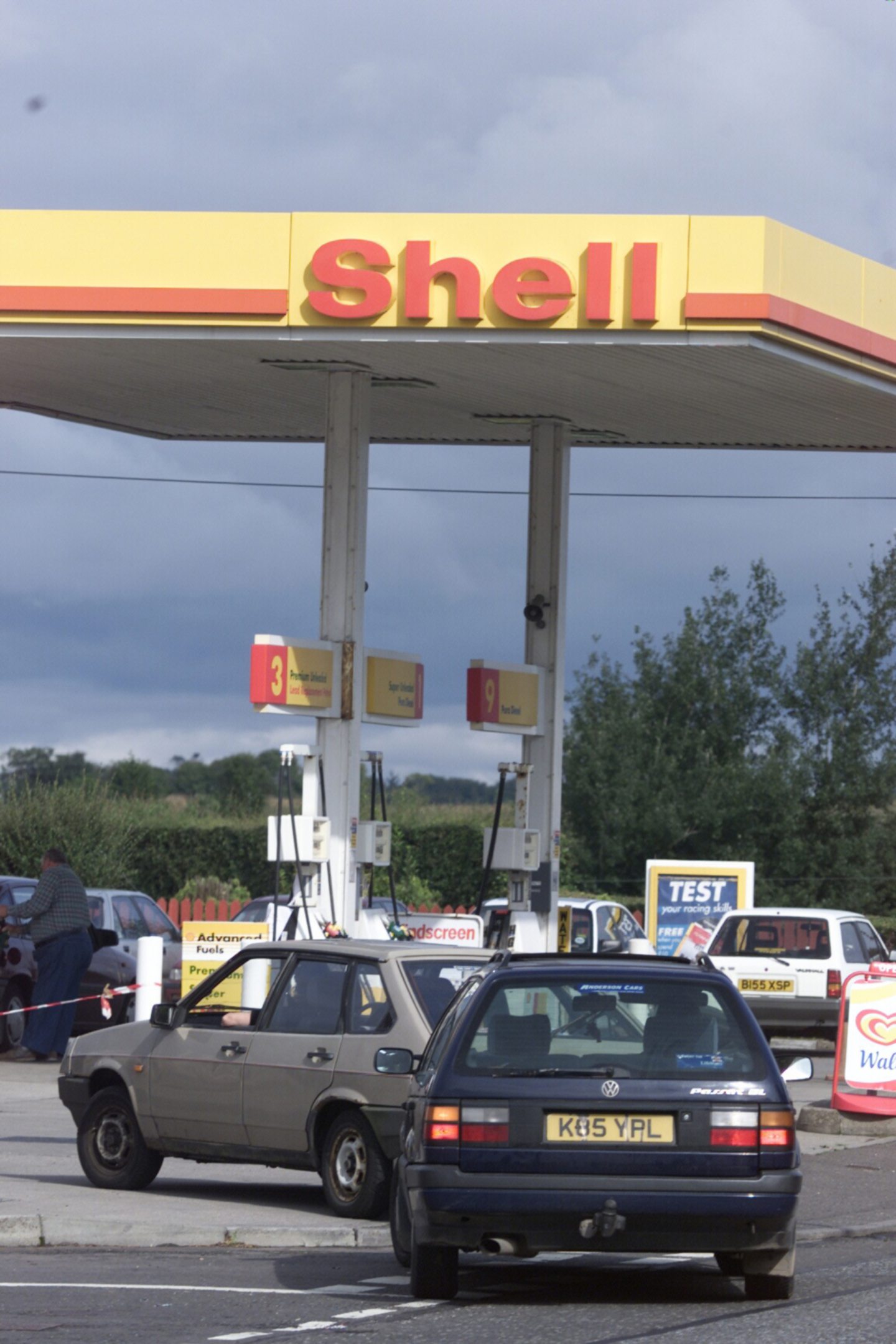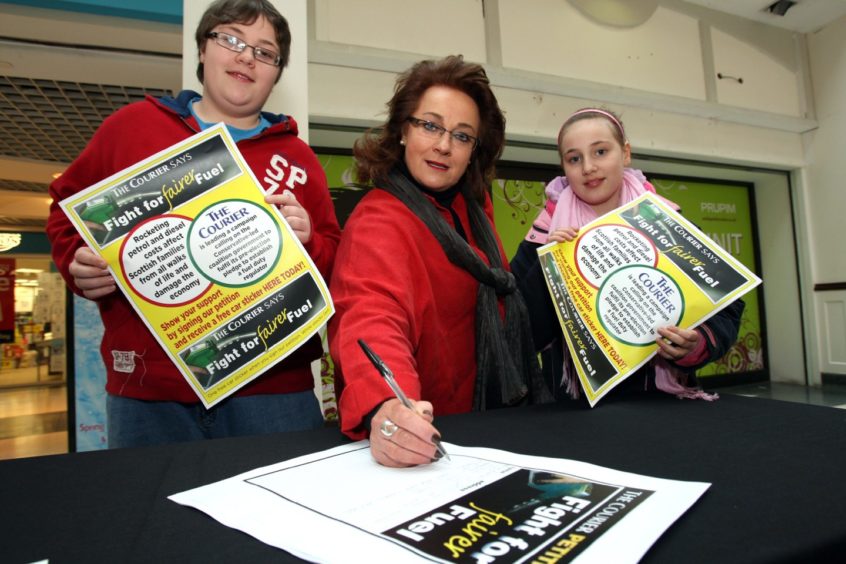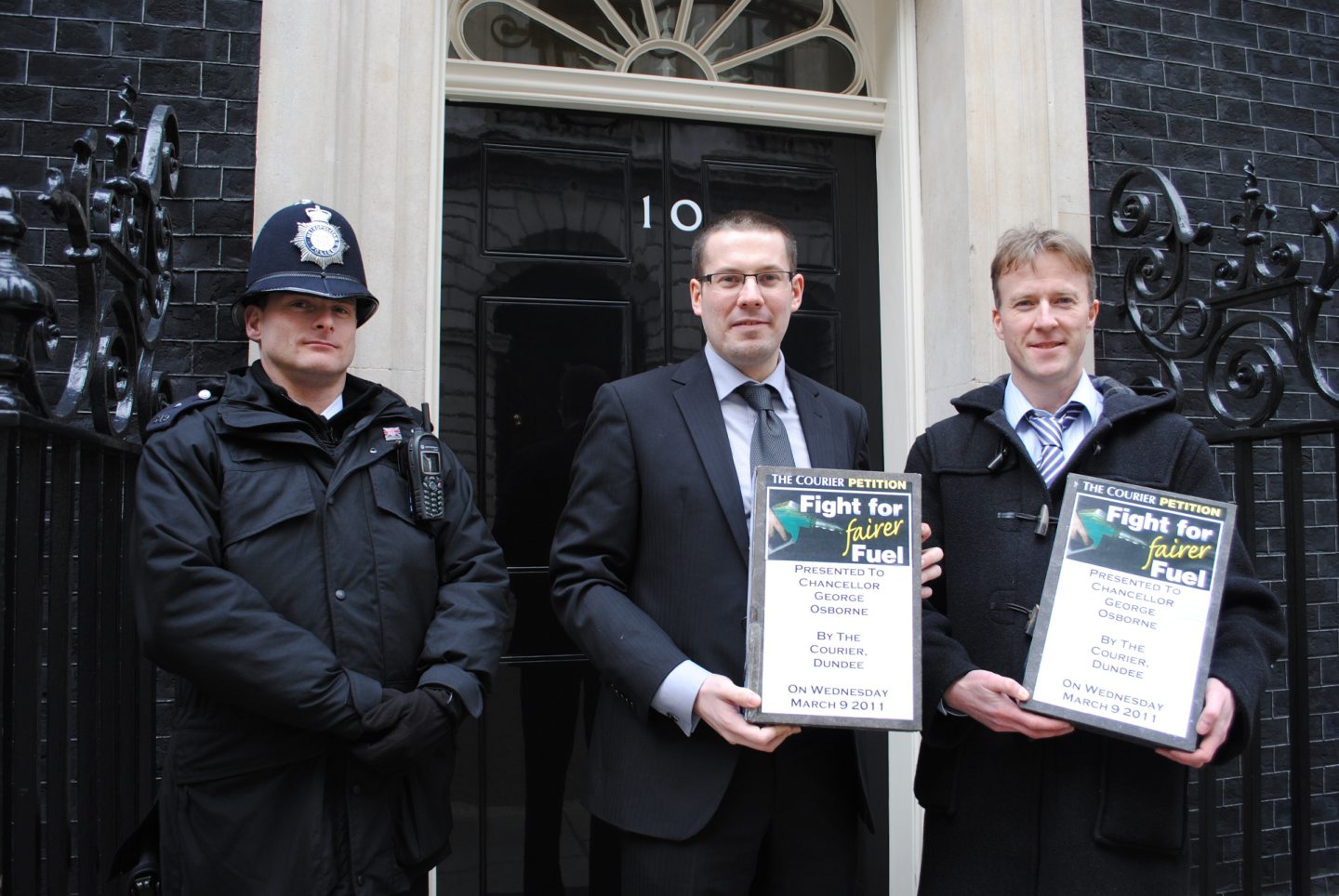Do you remember the long queues at the petrol pumps in September 2000 when fuel protests brought Dundee to a standstill?
Today it seems incredible that bitter protests and blockades could have taken place against petrol prices topping 80p a litre, when diesel has surpassed £1.70 and unleaded is not far behind.
The price of crude in 2000 was $35 a barrel, when today it’s climbing past $113.
Campaigners in 2000 were furious that Tony Blair’s Labour government of the day continued to hike prices and refused to reduce fuel tax.
It was September 7 2000, when the first lorry drivers began to blockade oil refineries in England in protest at another hike in the cost of fuel.
Fuel price protest on Kingsway
That’s when panic-buying started in Dundee.
Forecourts in Dundee were packed in the wake of warnings from various motoring organisations that another increase was inevitable over the next few days.
The Dump the Pump group warning that a £5 gallon would become mandatory and protestors blockading Grangemouth prompted huge queues at the pumps.
Retailers predicted that Scotland could run out of fuel as the petrol crisis deepened.
Meanwhile, just hours before the UK was about to run dry, tankers began moving out of refineries, including Grangemouth, which served Scotland.
However, the demonstrators did not appear to be backing down and were now shifting their campaign of disruption to the roads, with Dundee one of the targets.
Go-slows by lorry, taxi drivers and farmers began to take effect.
Dozens of protesters from Angus and Dundee formed a convoy of around 70 vehicles on September 14, which brought rush-hour traffic to a crawl.
Individual groups of around 25 lorries and tractors were spotted heading into Dundee on the A92 from Arbroath, followed by an assembly of commuters.
Simultaneously, about 40 lorries and tractors from the Forfar area could be seen travelling slowly on the A90 towards Dundee.
Travelling up and down the Kingsway to the Swallow Hotel, the convoy moved at a glacial pace to block the dual carriageway between 8am and 10am.
Despite an apparent loosening of the protesters’ stranglehold at the oil refineries, petrol – and drivers’ patience – was still in very short supply with motorists squabbling among themselves at those filling stations lucky enough to have been topped up.
Dundee City Council said it was stopping collections of brown and blue bins and there would be no special collections as the fuel crisis began to bite hard.
Mobile library services were also suspended and all non-essential site visits and meetings involving travel were cancelled to conserve fuel.
Non-essential services might have been first to go but now other services, including social work and school transport, were coming under increasing pressure.
Hundreds of filling stations were running on empty with claims that some independent garages were selling petrol at £11 a gallon.
Motorists were now being urged by police to conserve fuel where possible.
Inspector Gordon Taylor of Tayside Police’s Mobile Support Unit suggested commuters should car share with other motorists at every opportunity.
Inspector Taylor said that drivers should also consider other public transport options that would help save fuel during the current crisis.
By September 16 the army was on standby to deal with the blockades and the NHS was put on an emergency footing before the protests came to an end.
Supplies slowly returned to normal.
A hardcore group of farmers and hauliers continued to protest despite concessions announced by Chancellor Gordon Brown that fuel duty would be frozen.
The People’s Fuel Lobby organised a protest from Inverurie-Edinburgh but failed to get legal blessing for the Dundee leg, which took place on November 13.
The council put the brakes on because there was concern there would be major chaos on the Kingsway ring road because of major roadworks.
The 84-vehicle procession was instead broken up into groups of 10 by police before the gathering was reassembled again at Invergowrie.
After the protests in autumn 2000 had ended the Institute of Directors estimated the cost to UK businesses at £1 billion.
Fuel prices continued to rise, though, and there were more protests, though not as destabilising, which took place in 2005 and 2007.
The Courier campaign goes to Downing Street
In 2011 The Courier took its own, clear message to Prime Minister David Cameron that soaring petrol and diesel costs were taking their toll on people in this area.
The Courier’s fight for a fairer deal on fuel called on the Conservative-led coalition to fulfil its pre-election pledge to establish a fuel duty regulator.
We handed over boxes of petition coupons signed by more than 10,000 of our readers.
The team also took the endorsement of cross-party politicians and fulfilled a promise made to thousands of Courier readers that we would present the petition to the UK Government ahead of the 2011 Budget on March 23.
Two weeks later Chancellor George Osborne surprised the nation by announcing a 1p cut to fuel prices and announced the introduction of a regulator.
Families and businesses are still feeling the brunt of the seemingly never-ending rise in diesel and petrol, which could hit £2.50 and £3 a litre in 2022.
So will fuel prices come down?
Will protests return to Dundee as costs hit record highs?
Only time will tell if the city keeps on moving.
More like this:
Fuel supply crisis: how did we cope with winters of discontent in 1970s?
Minutes from disaster: Out-of-control oil tanker almost struck the Tay Road Bridge
